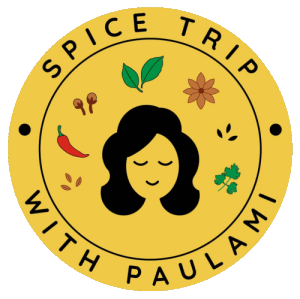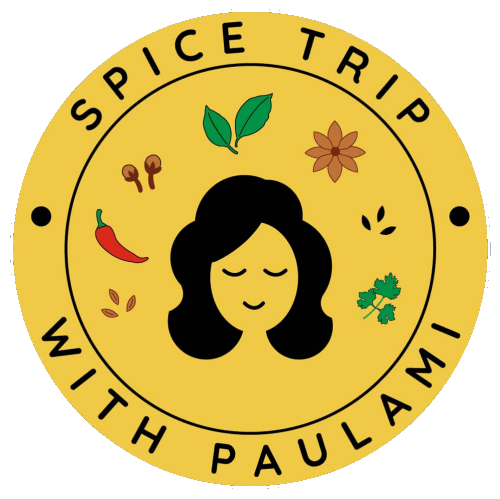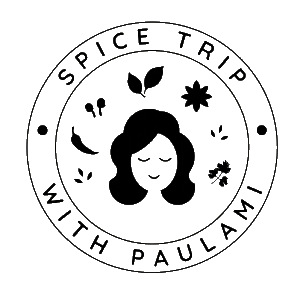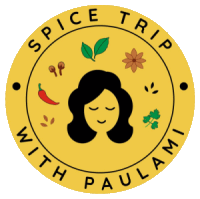
Understanding Indian Spices Basic 101
Spices are the way of life for any Indian kitchen. There is no Indian who can cook without spices, to add to our fascination of spices we even add them to our tea or use them for their medicinal purposes as well. And why won’t it be, India has been the spice capital of the world, the largest producer of almost all spices known. And hence we can’t think beyond them! Duh!
In my kitchen I have an entire cupboard dedicated to the varieties of spices, two racks in my refrigerator and a special portion of my freezer as well. But for daily use I have this spice box or as we call it ‘Masala Dabba’ in Hindi for my everyday cooking. (Masala = Spice & Dabba = Box). It’s not always the standard ingredients as you see below, but keeps varying depending on the part of the country (India) you belong. I have 3 spice boxes with different ingredients! GUILTY!

Now comes the biggest myth of Indian cooking being complicated due to the use of spices. To be honest it’s very easy to cook Indian when you understand the use of the basic spices. And by the end of this blog, I promise you would have learnt how to make a basic Indian Curry (of course there are loads of variation to it but let’s stick to the basic for now).
Often Indian food is compared to hot & spicy food but the truth is its flavorful! It engages with every part of your tongue, your palate. If you are new to Indian food you will experience a tingling sensation in your mouth or throat and that’s because your palate is experiencing taste that it has never experienced before. Indian Food has various depths of flavor – it’s never a flat. A plate of Indian food will have sweet, sour, butter, savory all in different portions of curries.
There are a basic 20 to 30 spices that are used in many dishes—cumin, coriander, turmeric, and ginger, to name a few—and there are an infinite number of ways of using them. Each spice has a reason for being there. They not only make the food more exciting and flavorful but have health benefits too. Contrary to common belief, not all Indian dishes are curries. However, “curry” has become a catch-all name for any spice-based meat or vegetable dish with a sauce. Curries can be watery, dry, red, green, hot, or really, really hot—it’s completely up to the chef and the target audience being served.
Indian cuisine comes with an added advantage for vegetarians: For them, it’s one of the friendliest cuisines around. Judicious use of spices and sauces breathes new life into the likes of potatoes, cauliflower, peas, and eggplant. And you no longer need to depend on just boring salads and soups but indulge in some mouth tingling food regularly.
All said and done, it’s very easy to start bringing the tastes of India into your kitchen. Try to incorporate Indian flavors into dishes you already do, for example, roasted fish, chicken or steamed vegetables. Pick something with two or three spices and start with that. Add a little cumin, ginger, and chili pepper to the vegetable you like maybe. Buy small packets of spices for experimentation and introduce your very own combination.
The bottom line is to keep it simple when you’re starting out at home. Look for basic potato, okra, and meat dishes to help build your Indian cooking skills. You don’t need all those 20 – 30 spices to master the art of Indian Curry making to start with. But the best curries are those where you cook the onion, with ginger garlic paste for a considerable amount of time with patience rather than burning them down.
With the variety of spices and condiments and experimental attitude, Indian cuisine will transform all you home cooks into creative and adventurous kitchen geeks.

Below is the list of spices/ingredients that will help you to start cooking Indian.
- Turmeric powder (kurkuma)
- Red chilli powder (rode chilipoeder) + Dried red chilli
- Cumin seeds & powder (komijn)
- Coriander powder (korianderpoeder)
- Panch phoron – important to the region I come from
- Garam masala
- Bay leaf
- Asafoetida
- Cardamom
- Black mustard seeds (zwarte mostardzaad)
- Curry leaves (kerriebladjes)
- Grated coconut (geraspte kokos uit diepvries)
- Tamarind (tamarinde)
- Jaggery






